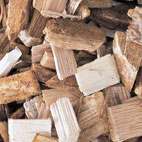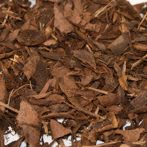Woodchip vs Bark
So you have a job to do, and you know you need either bark or wood chip, but you’re not sure which one? Take a look at our quick guide to help you decide before you buy.
What’s the difference?
It’s all in the name! Wood chip, as you might expect, is made from chipped wood: wood that has been chopped into little pieces, often by tree surgeons when they have cut down a tree. Bark chippings, on the other hand, are only the bark, chopped up. Bark chippings are usually made from spruce or pine bark, chopped up small, and are often a by-product of the timber industry.
What should you choose for a particular job?

 The two products can be used for many similar things, but there are a few differences. Wood chip is rather more durable than bark chippings, which are generally softer, smaller, and rot down faster, however bark can be more attractive.
The two products can be used for many similar things, but there are a few differences. Wood chip is rather more durable than bark chippings, which are generally softer, smaller, and rot down faster, however bark can be more attractive.
So where you want a more lasting effect, go for wood chip. For example, if you’re making paths, you can use bark, but you will probably need to replace it or at least add to it, every year. However, softwood chips, which are basically economy wood chip, last much longer. They are ideal for creating paths, as they will take longer to rot down.
Most bark chippings and wood chip are suitable for mulching in the garden. Choose your product by colour, size and shape, to give you the visual effect that you want. For example, pine bark chips are a lovely reddish colour. However, if you prefer a darker colour, where rotting down won’t show quite so much, then go for a pine and spruce mix, or composted bark fines, which also provide a boost of organic matter as they rot down.
If you’re keeping animals, you need to be certain that the wood has not been treated with anything that could be harmful to them. So, for example, for chickens, go for our chicken chip, which is 100% untreated natural wood chip. In the same way, you need to be confident that anything you are using for a play area will be safe for your children (checkout our play bark range here). Check for testing to particular standards, such as the BSEN 1177:1998 standard, to ensure that it will be safe for use in a play area. Your best option may be to look for ‘play bark’, bark which has been tested to BSEN 4790:1987, and certified suitable for play areas, although hardwood play chippings and softwood play chippings are also suitable.
Whatever you choose, check out the recommended thickness for the job, whether for play areas, mulching or paths. Most bark suppliers will have a volume calculator to help you, and can also provide advice if necessary